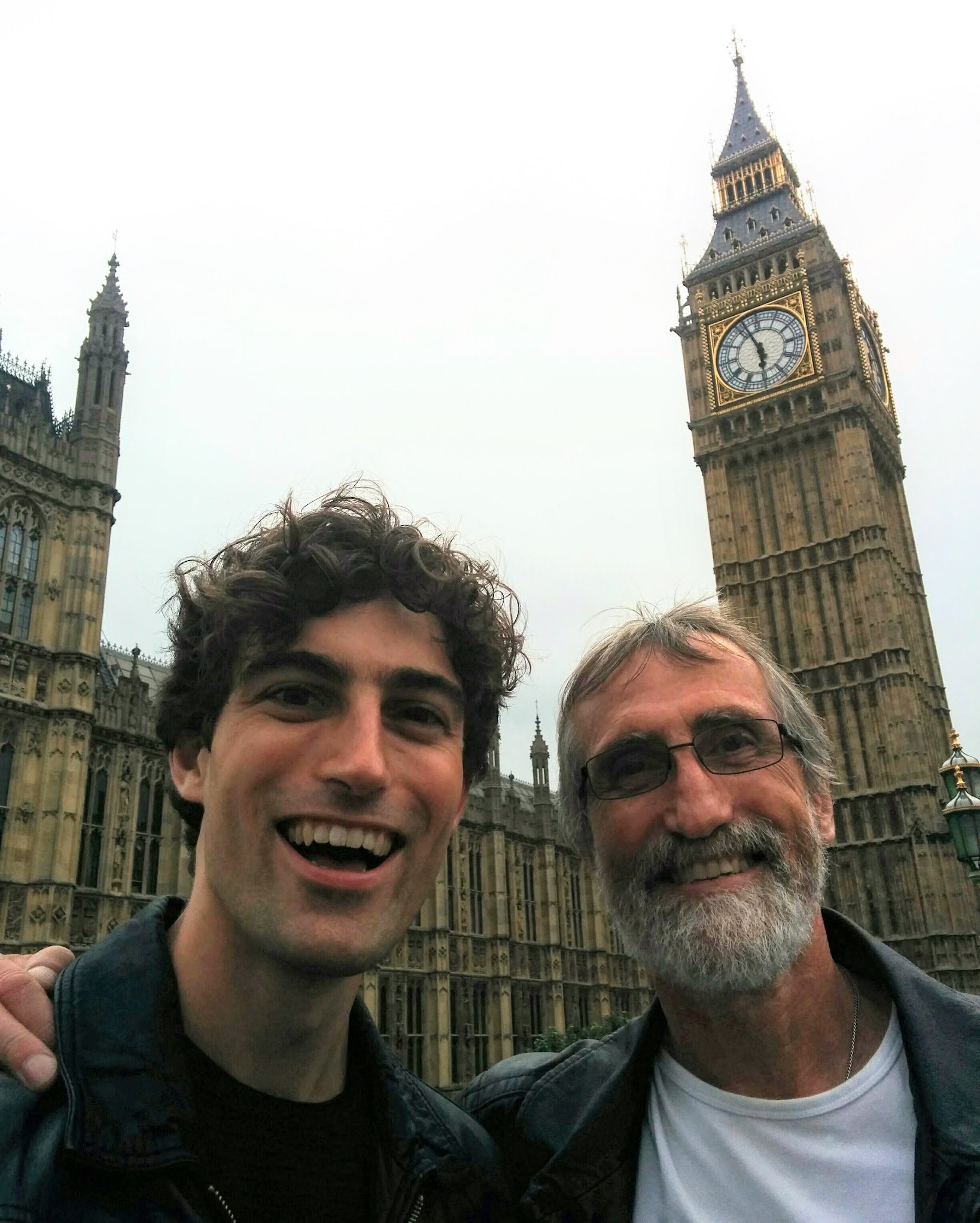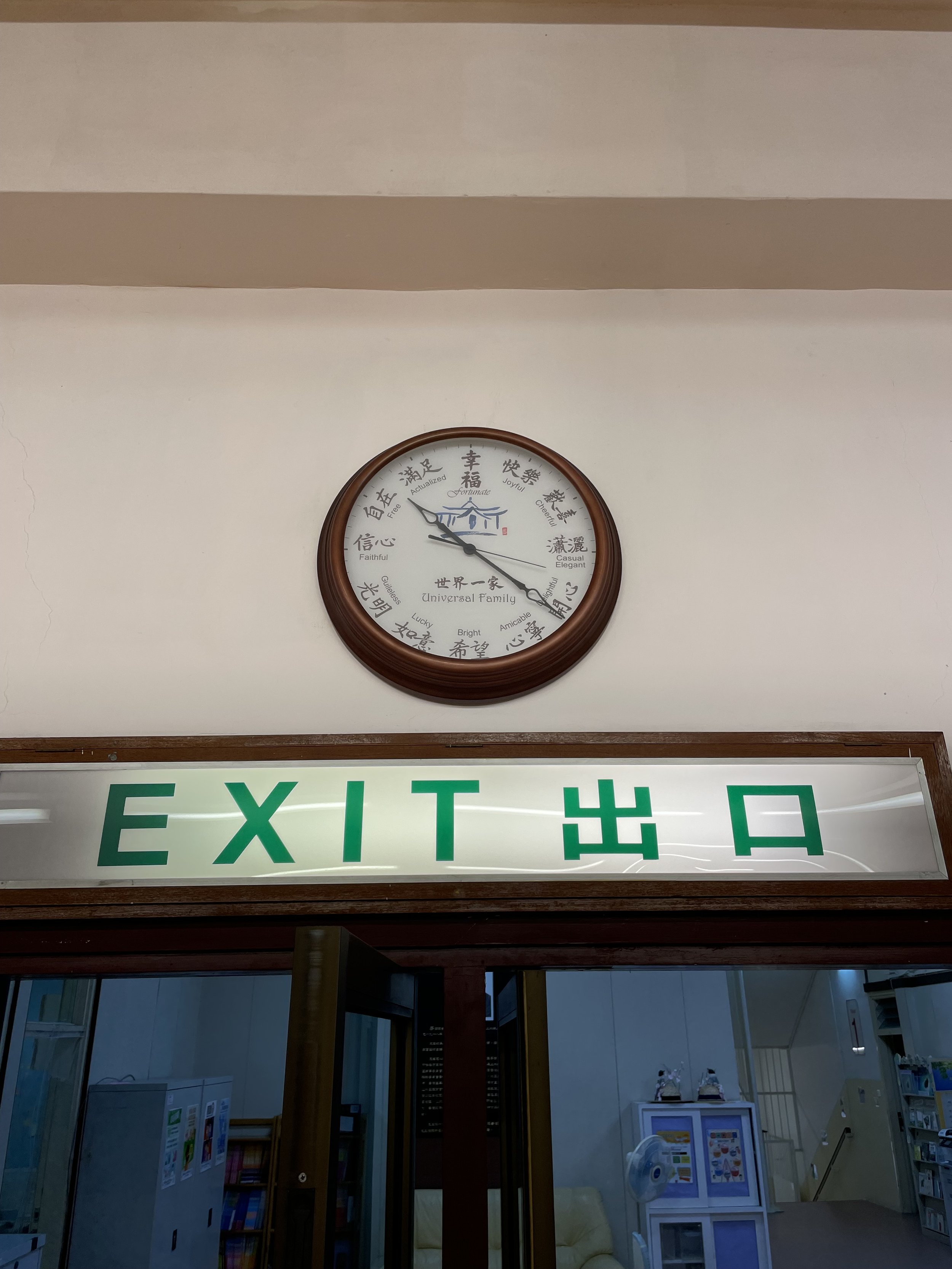Grandfather Clock - Sam Sedgman
Sam & Dad by Sam Sedgman, London
When I think of time, I think of my father. Every Sunday, growing up, he wound the grandfather clock in our dining room. He heaved up the weights, turned round the hands, and set the pendulum swinging. It called out the hours with terrific bongs. “How do you sleep?” people asked, raising their voice when they came over. But it sounded like home. I missed it when it wasn’t there.
One year, I got my dad a tour of Big Ben for his birthday. I remember a particular moment in the Clock Room, beneath the belfry at the top of the tower. It was a quarter to six. I know this because the clock itself had just told us, and when you are three feet from a mechanical clock the size of a car, you really know when it’s telling you the time. Gears had clanked, weights had dropped, and huge hammers had struck the bells, sending vibrations through our bones. I’d turned to my dad, and we both wore grins of unbridled, childlike joy. What a sight, we were both thinking. I can’t believe something this cool actually exists.
That was when I decided to write about time. That’s what I do – I’m a children’s author. I like to write stories set in the real world – I often say the real world has so much more magic in it than any fantasy I could invent. And Big Ben was full of magic. The gleaming black machinery; the divots worn into the stone floor where generations of clock keepers have stood to wind the weights; the stack of old pennies on the pendulum, added and removed to keep the clock running to time in the face of heat, rust, and stray pigeons perching on the hour hand.
Time is messy. When Big Ben was built, it was the most accurate mechanical clock in the world, precise to within two seconds a week. Today, atomic clocks measure the vibration of frozen caesium atoms, precise to one second in a hundred million years. But still these clocks need adjustment, because the earth does not keep time as cleanly as an atomic clock. It doesn’t spin at a constant speed, and its path round the sun doesn’t divide cleanly into a number of whole days. So we try to keep up, adding leap days and leap seconds and daylight savings time, like putting pennies on the pendulum to speed up and slow down the earth.
Clock by Sam Butler, Hong Kong 2023
Many people have tried to fix time. In the French Revolution, the metric system was invented, to standardise how we measured the world. Along with metres and kilograms came metric time: a day divided into ten hours, each hour a hundred minutes, each minute a hundred seconds. For years, French clocks showed a 10 at the top instead of a 12. It didn’t catch on. It seems silly, now – but it’s no sillier than the way we measure time today, splitting hours into sixty minutes just because the Babylonians did, 4000 years ago. Why sixty? Why twelve? Many ancient civilizations divided the daylight hours into ten: one for each finger and thumb. No number is correct. There’s no right or wrong way to measure time.
The book I ended up writing is called The Clockwork Conspiracy. It imagines what might happen if the government decided to switch to metric time – and it starts with a boy’s father, the keeper of Big Ben, vanishing from the belfry on the night the clocks go back. You can probably guess where I got the idea.
“There’s no right or wrong way to measure time.”
We often think of time as something scientific – a constant accurate force. But time is just a tool we use to give the world meaning. And we can use that tool however we like. Time is a human creation. And that’s why, when I think of time, I think of my father: winding the clock in our old house, and grinning like a child with me as Big Ben struck, sharing a moment filled with joy at the wonder of time itself.
Sam Sedgman is an award-winning children's author. His latest book, The Clockwork Conspiracy, is published February 2024. https://samsedgman.com/the-clockwork-conspiracy

